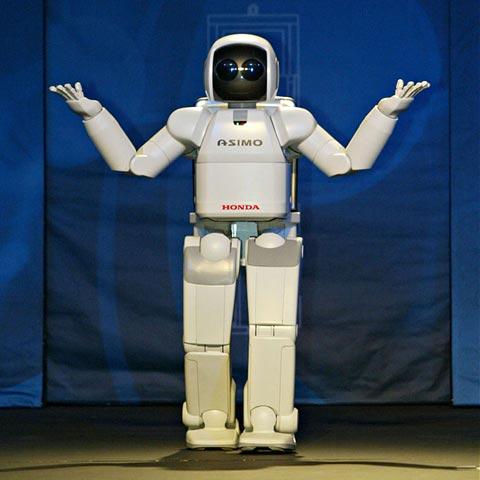Printed from www.flong.com/texts/essays/essay_pose/
Contents © 2020 Golan Levin and Collaborators
Golan Levin and Collaborators
Essays and Statements
- Peer-Reviewed Publications
- Essays and Statements
- Interviews and Dialogues
- Catalogues and Lists
- Project Reports
- Press Clippings
- Lectures
- Code
- Misc.
- 03 2015. Brown & Son (Catalogue Essay)
- 03 2015. For Us, By Us
- 05 2009. Audiovisual Software Art: A Partial History
- 07 2006. Hands Up! The 'Media Art Posture'
- 07 2006. Some thoughts on Maeda for Ars 2006
- 07 2006. Einige Gedanken zu John Maeda
- 02 2006. Notes on Visualization Without Computers
- 10 2005. Artist Statement, October 2005
- 09 2005. Three Questions for Generative Artists
- 07 2005. Net Vision Jury Statement, Prix Ars
- 07 2005. Net Vision Jury-Begründung, Prix Ars
- 12 2004. Computer Vision for Artists and Designers
- 08 2003. Essay for John Maeda's Creative Code
- 01 2003. Pedagogical Statement
- 11 2001. Essay for 4x4: Beyond Photoshop
- 10 2001. Statement for Graphic Design in the 21st C.
- 10 2001. Statement of the Jury, Berlin Transmediale
- 05 2000. Statement For Communication Arts
- 12 1999. MIT Thesis Proposal
- 12 1997. MIT Statement of Objectives
Hands Up! A Visual Essay on the 'Media Art Pose'
Originally presented at Emoção Art.ficial Symposium, Sao Paolo, Brazil.
Golan Levin, 24 July 2006. Expanded 8 September 2006.
The context for this brief visual essay was the 2006 Emoção Art.ficial exhibition, which featured Text Rain, Cheap Imitation, Software Mirrors, and Messa di Voce (all interactive artworks, by various artists, which are discussed below). It was uncanny to find this particular collection of projects within the same exhibition hall; their similar method of interaction inspired this brief presentation. Thanks to Romy Achituv and France Cadet for their help with the photos.
When we want to assert control or issue commands, we raise our arms.
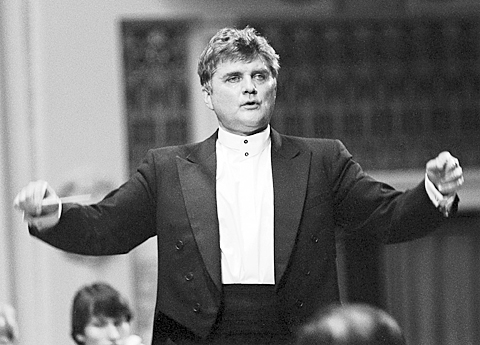
This gesture also serves to channel divine energy, pulling it from the heavens above,
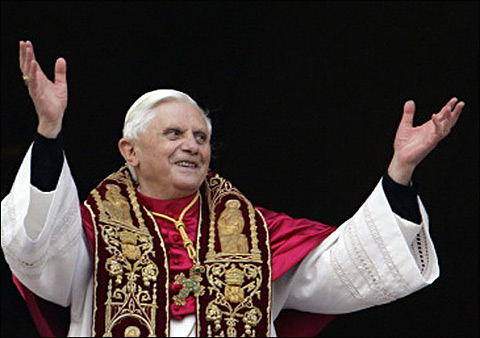
... and delivering it to fortunate recipients below.

The action can also serve in the manner of an antenna, to collect and focus the attention and responses of those observers. (Below, Mick Jagger from a photo by Ethan Eisenberg):

So it is with interactive art systems, such as Myron Krueger's seminal VideoPlace (c.1974), which augments visitors' silhouettes with a variety of responsive graphics.
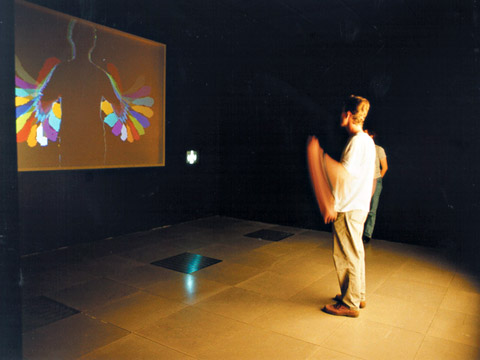
or Camille Utterback and Romy Achituv's classic Text Rain (1999), which allows visitors to "catch" gently falling virtual text fragments:
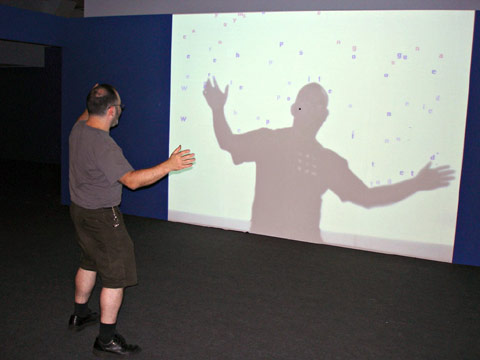
... or in the various Software Mirrors by Daniel Rozin (2000-2001), which present different approaches to idiosyncratic, personal interpretations of the concept of a "pixel":
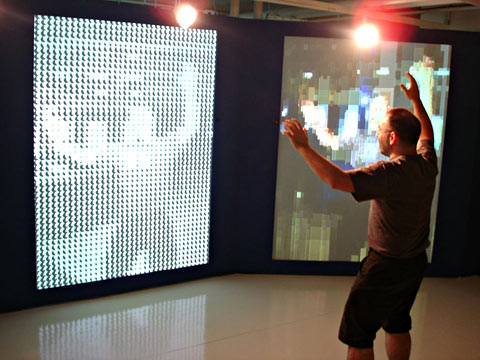
... or in David Rokeby's Cheap Imitation (2002), wherein a reproduction of Duchamp's Nude Descending a Staircase is made to reflect the visitors' movements:
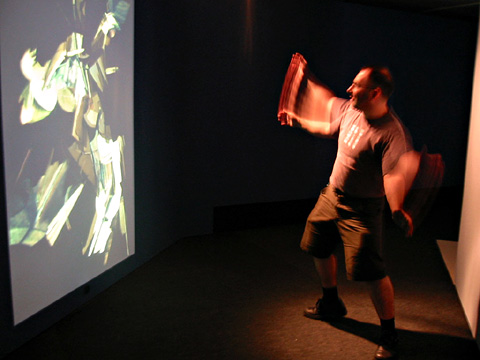
... or in my own Messa di Voce, developed in collaboration with Zach Lieberman, Jaap Blonk and Joan La Barbara (2003), in which the vocal speech and body movements of the visitors generate virtual objects and environments:
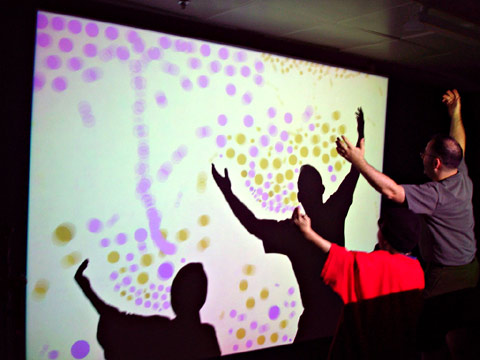
What is this posture we see, again and again, in interactive media art installations? We even detect a hint of this pose in the abstracted character of the Ars Electronica logotype.

These "interactive" systems are predicated on the idea that the user is controlling a responsive system. To judge from this recurring pattern of behavior, however, might we speculate that this control is ultimately an illusion? Perhaps these systems are really controlling us after all.
The "Media Art Pose" is the posture of total surrender.

Fortunately, as with any repetitive task, we can design a labor-saving machine to do it for us.
